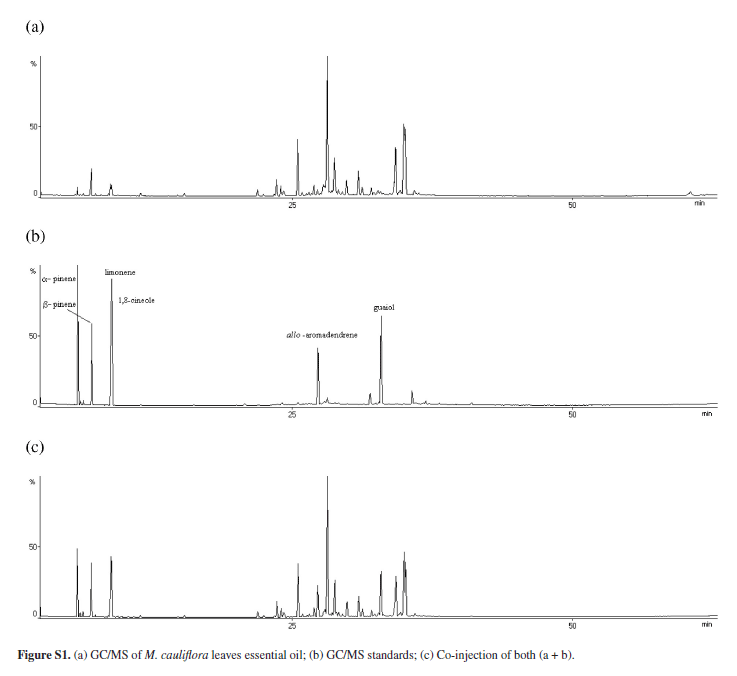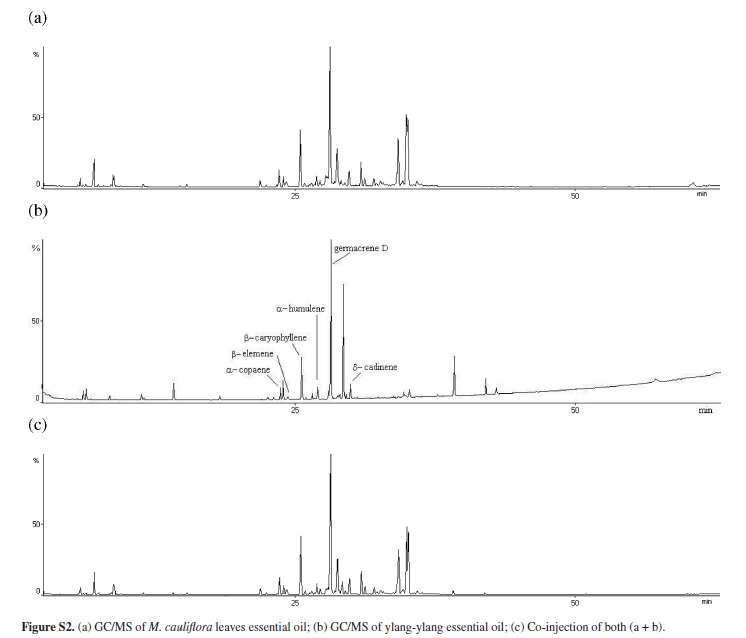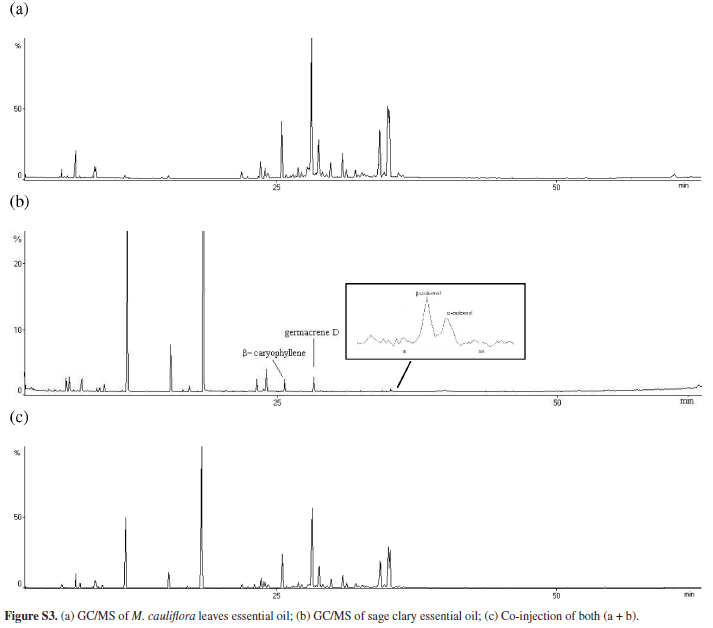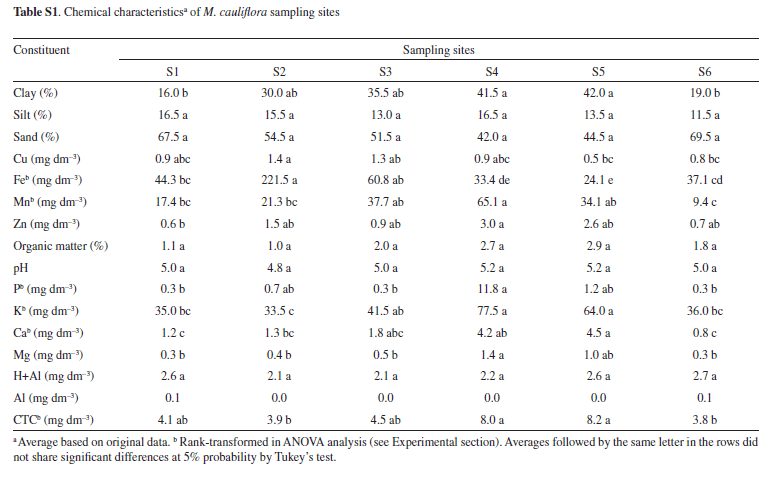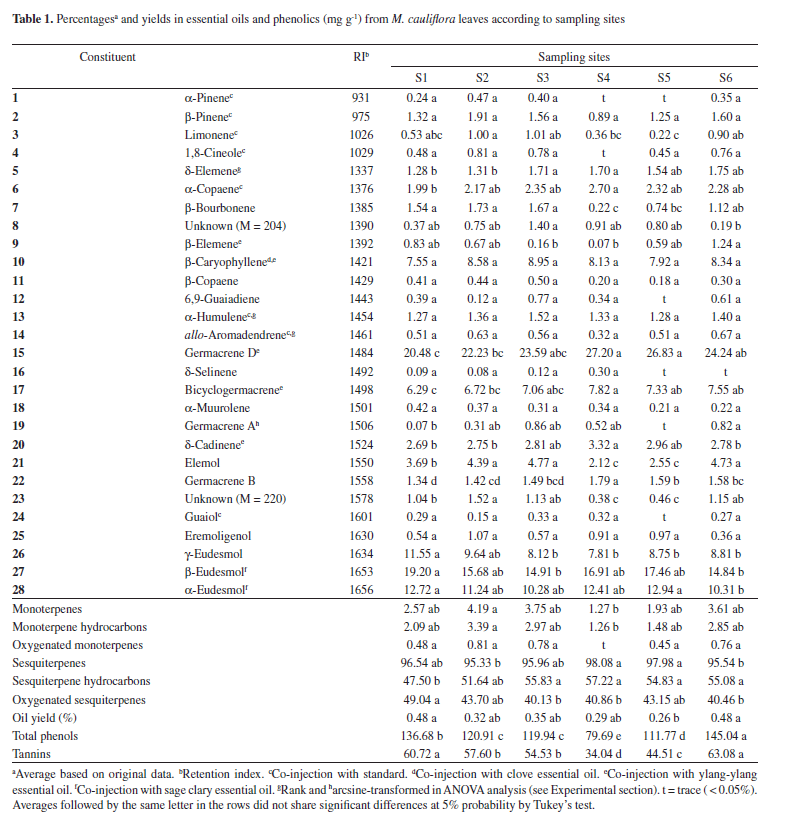Foliar contents of total phenols and tannins and the essential oil composition of Myrciaria cauliflora populations cultivated in six sampling sites have shown the presence of four clusters related to soil types and foliar nutrients. Cluster I included samples which originated from sandy loam soil (S1) with the highest and lowest percentages of γ-eudesmol (11.55%) and germacrene D (20.48%), respectively, as well as high total phenol (136.68 mg g-1) and tannin (60.72 mg g-1) contents. Cluster II, rich in elemol (4.61%), included all the samples cultivated from clay sand loam soils (S2, S3, and S6), whereas clay soils S4 (cluster III) and S5 (cluster IV) had the highest amounts of germacrene D (III: 27.20%; IV: 26.83%) and the lowest levels of elemol (2.12-2.55%), total phenols (79.69 and 111.77 mg g-1), and tannins (34.04 and 44.51 mg g-1). The canonical redundancy analysis revealed the relationship between chemical balances in the soil and leaf nutrients in different clusters. Chemovariations may be environmentally determined.
Myrciaria cauliflora; essential oil; phenol; chemical variability; environmental influence; multivariate analysis



